
Pursuing Sustainable Sake Brewing with Love for Kitakata

佐藤 雅一
Masakazu Sato
Kitakata [Fukushima]
Masakazu Sato
Born in 1980 in Kitakata City. After about 7 years of working life following high school graduation, he was appointed the 10th generation head of Yamatogawa Shuzo Sake Brewery, a family business that has been ongoing since 1790. He is dedicated to solving various social issues in the region, such as local production for local consumption and creating community hubs, with a focus on sake.
Located in the northwestern part of Fukushima Prefecture, Kitakata City is surrounded by the majestic mountains of Bandai to the northeast and the Iide mountain range to the northwest, along with rich nature. Mr. Sato, the 10th generation at Yamatogawa Shuzo, which has been continuing for over 230 years, shares his thoughts and messages about the local sake produced with the clear water and rice from the area and made by the people living in Kitakata.
Local Rice, Water, Techniques, and to Energy
Yamatogawa Shuzo, a limited partnership company, was founded in 1790. It is a long-established sake brewery that has been operated by nine generations in Kitakata City. Mr. Sato Masakazu, the current president and the tenth generation, has spent his life in Kitakata except for eight years of working as an adult. He realized the charm of Kitakata, which has many breweries and clear seasons, only after comparing it with other places. He mentioned, “I didn’t understand when I was young, but there are things you won’t know until you go out.” The severe cold of Kitakata’s winter is suitable for sake brewing as it prevents the proliferation of germs. Since his childhood, Mr. Sato was told by his father, grandfather, and grandmother to take over the sake brewing, so he had decided in his heart to become a sake brewer.
The commitment of Yamatogawa Shuzo is to “Shiho Shili” sake brewing. Shiho Shili means consuming what is harvested within a radius of four Ri (about 16 kilometers). “We are the only one in Kitakata who brews sake with rice harvested within a 16-kilometer radius from the brewery. We deliberately use this term,” Mr. Sato proudly states.
To solve the shortage of agricultural workers, they established the “Yamatogawa Farm” and grow the rice for their sake in paddies covering an area about seven times the size of Tokyo Dome within a 16 km radius from the brewery. After 30 years of rice cultivation, Kitakata, nourished by the subterranean water from the Iide Mountains, is known as a rice-producing area. The sake made from this rice is bound to be delicious.
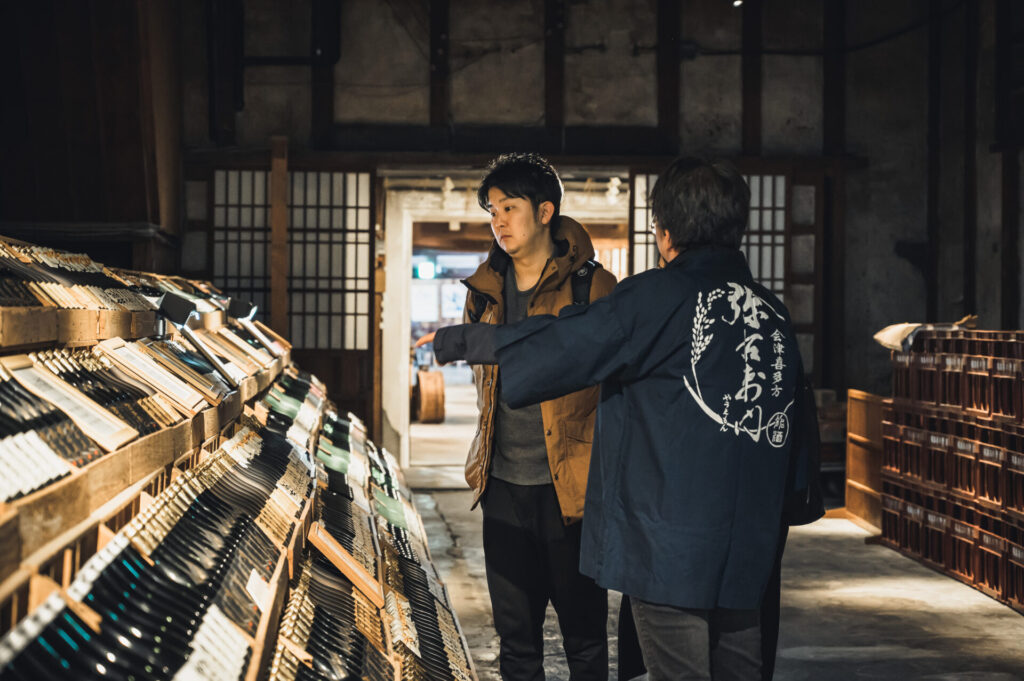
Unlike the traditional Toji system, which typically involves inviting a Toji (master brewer) from places like Niigata, Yamatogawa Shuzo has long since abandoned this system and hires local talent to continue the tradition. “Working overnight doesn’t fit with the modern labor system, so we’ve mechanized to some extent while improving the working environment for our employees,” Mr. Sato explains.
They thoroughly manage everything in-house to make the most of Aizu’s climate and the subterranean water from the Iide mountain range. This includes creating a circular system using the by-products of sake brewing, such as rice bran and sake lees, for fertilizer. Moreover, the ninth-generation Mr. Sato Yauemon established a renewable energy company, working towards self-sufficiency in energy. Their attitude of constantly challenging the status quo without being bound by convention leads to high-quality and sustainable sake brewing.
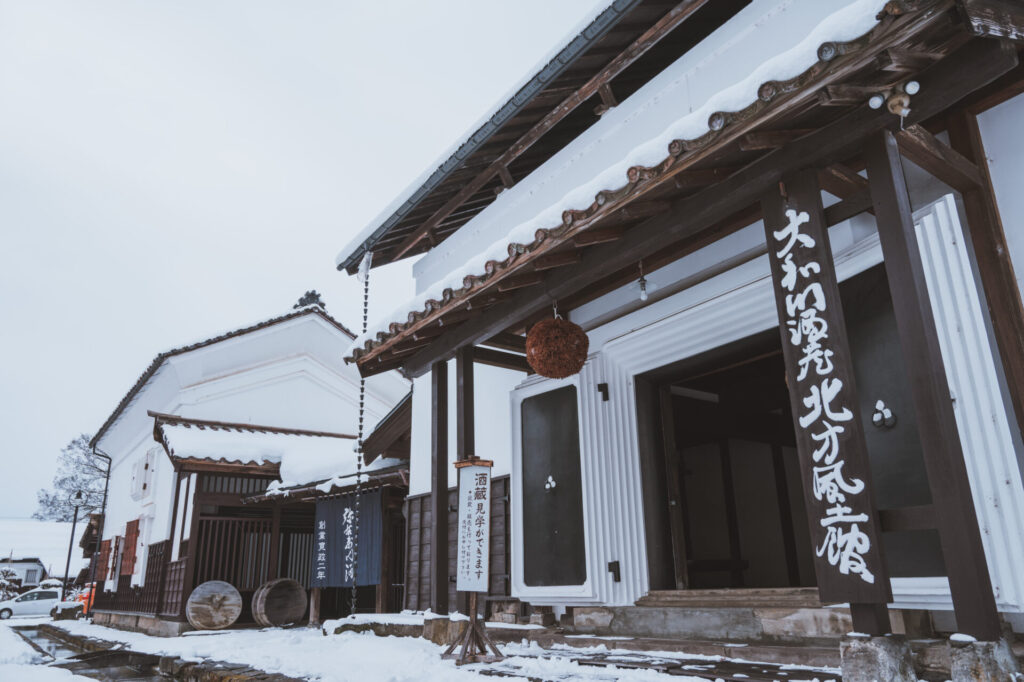
The History of Yamatogawa: From Nara to Kitakata
Here, we delve into the origin of the name “Yamatogawa.” It is said that Mr. Sato’s ancestors moved from Nara to Aizu in the 1600s. Before moving to Aizu, the ancestor was engaged in the cotton industry by the Yamato River, which originates in Nara Prefecture, hence the name Yamatogawa. The original trade name of the company was “Yamato-ya”, but it was changed to “Yamatogawa” in the late Meiji period(1868-1912). Around 1770, he started a cotton business in Teramachi, where the Kitakata Yamatogawa Sake Brewing Northern Museum now stands. The Teramachi area was once a strategic point on the Echigo-Kitaido highway and a distribution center for rice, and the company’s business achievements in this area were recognized. In 1702, as part of the “Great Reform of Tenmei”, the first generation Sato Yauemon was licensed as a sake brewer and began to brew and sell sake.
“We Want People to Love Kitakata” – Dedicated to Product Development
“Everything changed with the Great East Japan Earthquake.” The long-lasting reputational damage due to the nuclear accident caused significant emotional distress. Motivated by these feelings, Mr. Sato says, “We want people to love Kitakata and drink Kitakata’s sake. For that reason, we are developing unique products that take advantage of Kitakata’s natural environment.”
“The sales volume of sake has decreased to one-third of its peak. It is expected to continue declining. That’s why we want people to appreciate the value of Yamatogawa’s sake compared to other alcoholic beverages. We are committed to brewing sake that focuses on Kitakata, and we want to create opportunities for people to understand that.” Now, they have also expanded overseas, especially popular in Brazil where there are many Japanese restaurants. Mr. Sato wishes for more people in Japan to enjoy their sake as well.
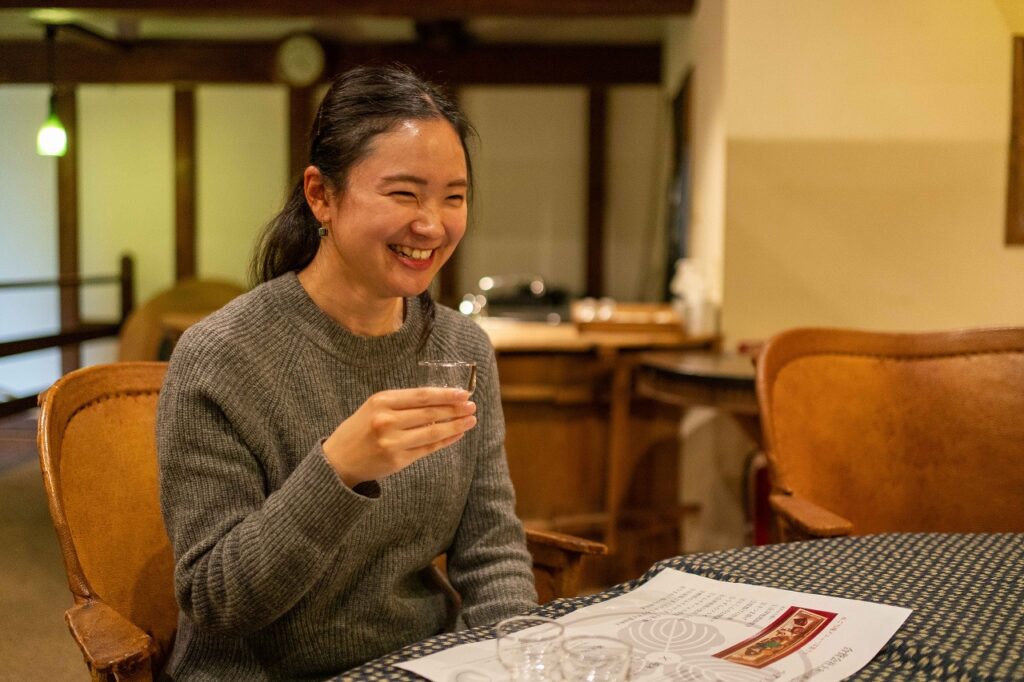
Sake That Can Only Be Experienced at Yamatogawa Shuzo in Kitakata
Yamatogawa Shuzo’s representative brand is “Yauemon. It is also the name that has been passed down from generation to generation by the head of the brewery, and has won the gold prize at the Annual Japan Sake Awards organized by the Japan Sake and Shochu Makers Association for eight consecutive years. There are many varieties, but the top recommendation is the “Junmai Karakuchi,” a soft, refreshing sake that can be enjoyed cold, at room temperature, or warmed, making it a versatile choice for all drinkers, priced reasonably at 1,200 yen (excluding tax). Mr. Sato hopes that even beginners can enjoy this sake without hesitation.
When visiting Yamakawa Shuzo, be sure to also visit the “Yamatogawa Sake Brewing Northern Museum” There, three warehouses are open to the public. The Edo warehouse was originally used for sake brewing and now exhibits various brewing tools. The Taisho warehouse demonstrates the high insulation properties of sake breweries, being cool in summer and warm in winter. The Showa warehouse is used as an event hall for weddings, concerts, and community events. The tasting corner, where you can sample over ten types of Yauemon sake, is also a highlight. “Being able to drink seasonal and rare sakes is a unique experience at a brewery. Please enjoy comparing them to your heart’s content,” Mr. Sato invites.
The temperament of the people of Kitakata is to “give it a try,” according to Mr. Sato. In 2023, he planned an event called “Enjoying a Premier Countryside Time with Food, Sake, and Aizu Lacquerware,” working together with inns and lacquerware artists.
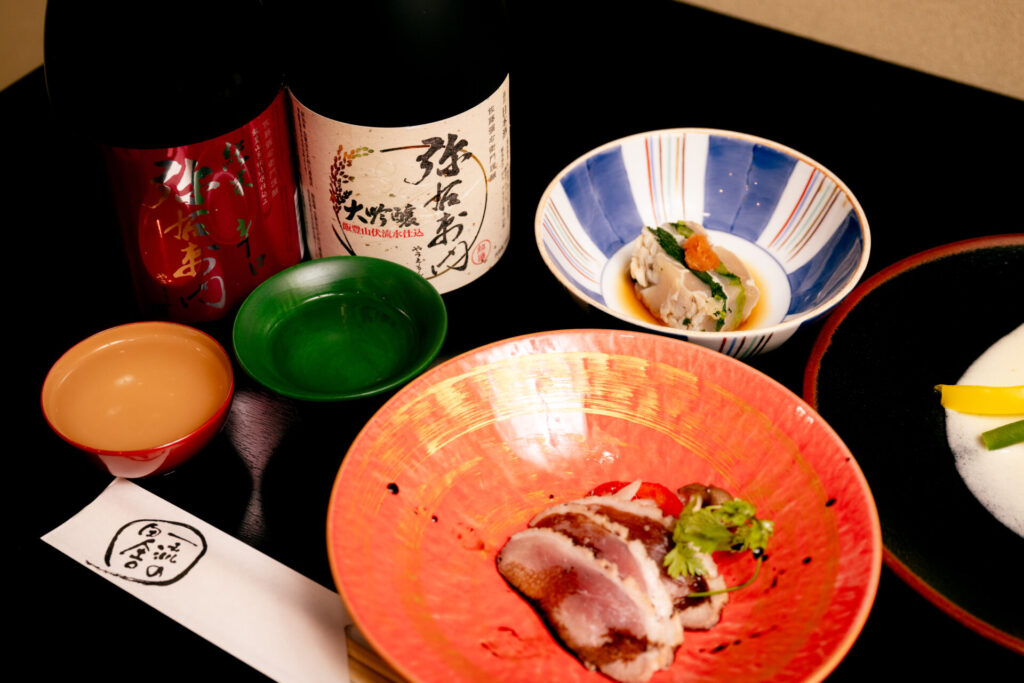
“Pairing with food was unexpectedly challenging. As a sake manufacturer, we don’t make food, so it’s a deep and complex world.” Sake, rich in amino acids, enhances the sweetness of meat, so he hopes people will enjoy them together. The event includes a sake-tasting seminar by Yamatogawa Shuzo, providing a perfect opportunity for beginners and intermediate enthusiasts to learn about sake categories and flavors and to experience how Kitakata’s sake differs from others across Japan. “Collaborations with sake are happening in various places now. We want to explore creating environments where people can enjoy sake along with various things and cultures, not just sticking to the usual sake associations.”
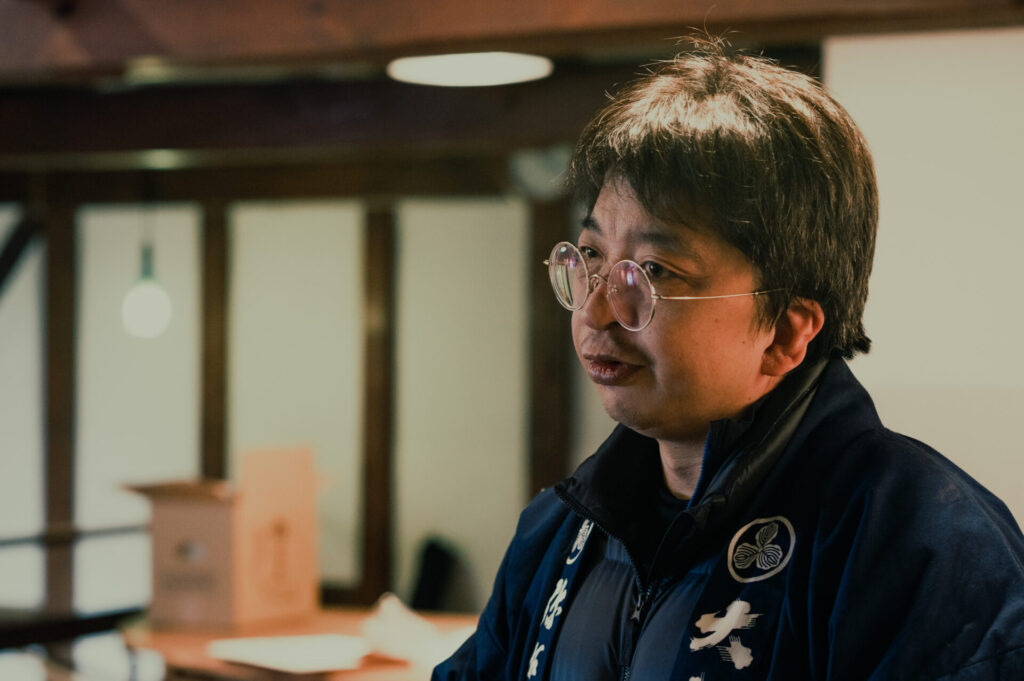
A Hub for the Community’s Daily Life
Mr. Sato’s challenges go beyond just sake brewing. His flexible efforts to enhance the cultural level of the community extend to the newly completed cafe in the brewery. “Initially, it was about making good use of the available space and creating an opportunity to attract new customers. But since it’s centrally located in town, it’s in a good spot, and I thought it could be a hub in the community’s daily life, a place that’s needed,” he says. The cafe offers not only coffee and sweets but also amazake drinks, unique to a sake shop. It also provides opportunities for theater performances, and the environment is conducive to work with Wi-Fi and outlets, promising to become a gathering point for not only local residents but also various people. “There’s a limit to what one company can do alone,” Mr. Sato expresses his passionate desire to collaborate with everyone to invigorate Kitakata.
